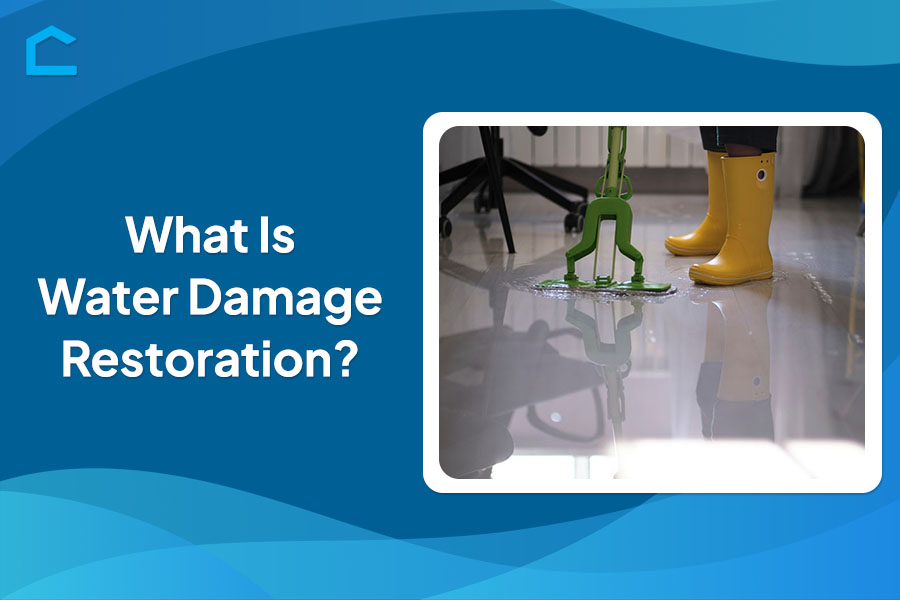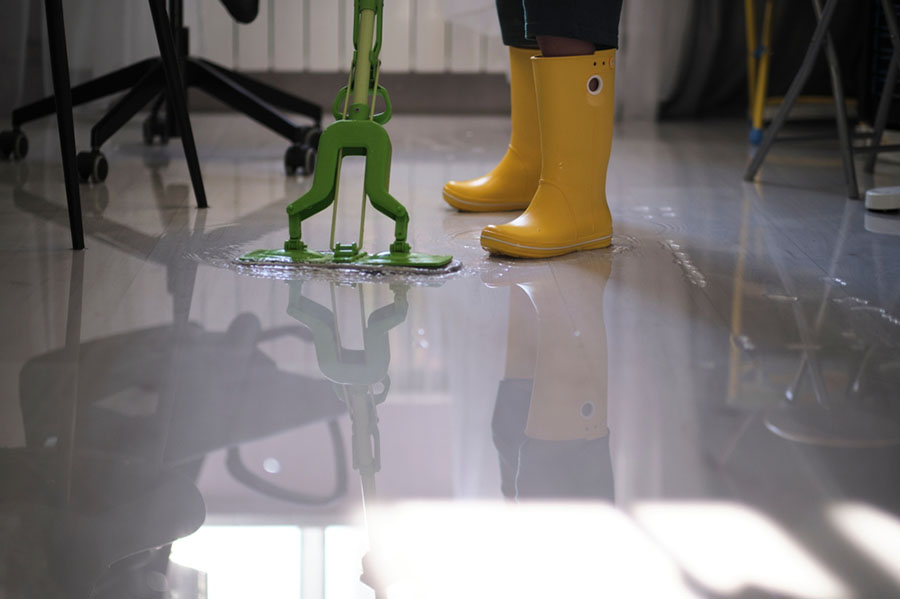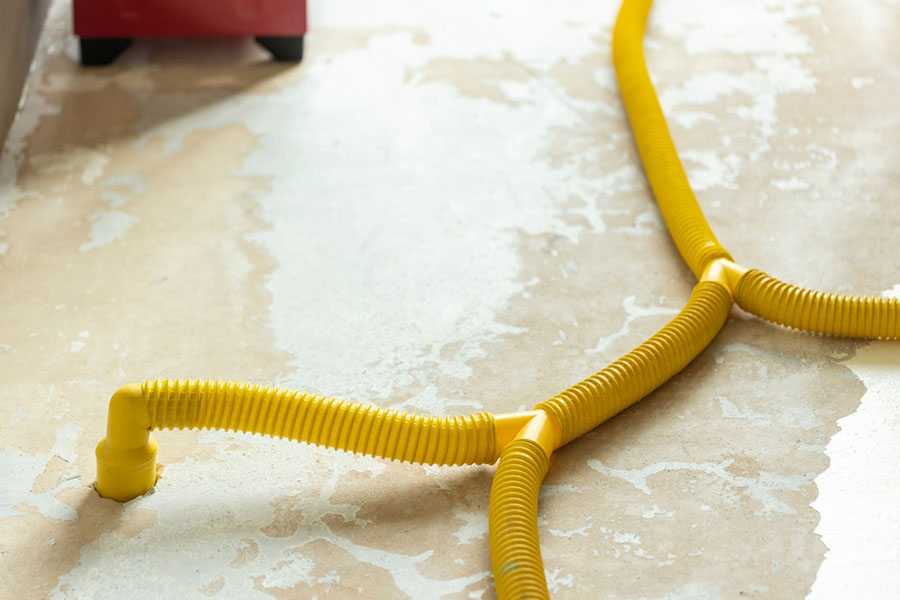What Is Water Damage Restoration?

When water finds its way into a home or business, the consequences can be devastating. From soaked carpets and ruined furniture to compromised structural integrity, the aftermath of water intrusion demands swift and professional intervention.
This is where a specialized service comes into play – one that homeowners and business owners turn to in their time of need. Highly trained technicians armed with state-of-the-art equipment stand ready to tackle the crisis head-on. With their expertise and strategic approach, they aim to minimize the impact of water damage and prevent more issues from arising.
Water damage can strike at any time, whether from a burst pipe, a leaky roof, or a flood. When it does, acting swiftly is crucial, as every minute counts in mitigating long-term effects and restoring normalcy. Join us to better understand what is water damage restoration and what it entails.

Source: shutterstock.com / Photo Contributor: Yavdat
What Is Water Damage Restoration?
Understanding water damage restoration
Water damage restoration is the process of repairing and restoring a property affected by water intrusion, such as flooding, leaks, or excessive moisture. The primary goal is to mitigate further damage, prevent mold growth, and restore the property to its pre-loss condition.
The process involves several steps:
- First, stop the water source to prevent further intrusion.
- Next, extract standing water and moisture from the affected areas.
- Then, dry and dehumidify these areas thoroughly.
- Finally, remove and replace any damaged materials, followed by cleaning and disinfecting the entire property.
Importance of prompt action
Prompt and effective water damage restoration prevents additional damage and minimizes the risks of mold growth and health hazards. It also reduces overall restoration costs and allows for a quicker return to everyday living or business operations.
Delaying the restoration process can lead to more extensive and costly repairs. That’s why it is essential to act quickly and seek professional assistance from qualified water damage restoration companies to ensure proper and timely restoration.
Now let’s dive deeper to understand what does water damage restoration include. Learning about the steps will give you a better picture of what water damage restoration entails.
Restoration Process Step by Step
1. Initial assessment and planning
The restoration process begins with a comprehensive assessment of the water-damaged areas. Professionals identify the source of water intrusion and take measures to stop it. They evaluate the extent and type of damage using specialized equipment like moisture meters and infrared cameras.
Based on the assessment, they create an effective plan, determine the required equipment and resources, and implement temporary protective measures if needed. This initial assessment is crucial for developing a targeted and efficient restoration strategy.
It helps professionals understand the scope of the project and allocate resources accordingly. A thorough assessment also aids in identifying potential safety hazards and taking necessary precautions.
2. Water extraction and drying
Once the planning is complete, the next important step is water extraction and drying. Using powerful pumps and vacuums, professionals remove any standing water from the affected areas. Specialized drying equipment, such as dehumidifiers and air movers, is then deployed to thoroughly dry out the space.
This drying process prevents further damage and mold growth. It may take several days or weeks, depending on the severity of the water damage. Professionals continuously monitor moisture levels to ensure complete drying before proceeding.
The drying phase is critical as any remaining moisture can lead to ongoing issues such as structural damage, musty odors, and health problems mold presence may cause.

Source: shutterstock.com / Photo Contributor: Lea Rae
3. Cleaning, sanitizing, and restoration
After the affected area is dry, the cleaning and sanitizing phase begins. Professionals use specialized techniques and antimicrobial treatments to clean and disinfect all materials and surfaces exposed to water.
Any materials that cannot be salvaged are removed and replaced. Finally, the restoration and repair work commences, which may involve repairing or replacing structural elements like drywall, flooring, or insulation.
4. Property restoration process
The goal is to restore the property to its pre-loss condition while adhering to industry standards and local regulations. During the cleaning and sanitizing process, professionals take measures to eliminate any remaining contaminants, odors, or potential health hazards.
They use specialized products and equipment to ensure a thorough and effective cleaning. The restoration phase involves skilled craftsmanship and attention to detail to recreate the original condition of the property as closely as possible.
Importance of Professional Restoration
Professional water damage restoration services are essential due to the complexity and risks involved.
Expertise and advanced equipment
They leverage advanced equipment like moisture meters, infrared cameras, and industrial-grade drying and dehumidification tools inaccessible to homeowners. DIY attempts often lead to incomplete drying, trapped moisture, mold growth, structural damage, and potential health hazards.
Insurance and warranty coverage
Most insurance providers require professional restoration adhering to industry standards to ensure coverage eligibility. Hiring professionals ensures thorough assessment, effective drying, and complete remediation. It also minimizes secondary damage, streamlines the insurance claims process, and includes warranties on the work performed.
Professional restoration companies bring expertise, specialized tools, and proven methodologies to mitigate risks. They ensure safety and offer reassurance in the aftermath of water damage incidents.
Conclusion
In the aftermath of water damage, attempting DIY restoration methods is simply too risky. When water intrudes into a home or business, proper remediation requires professional expertise, specialized equipment, and a proven process.
Water damage restoration experts are uniquely qualified to ensure the job is done thoroughly and safely. This guide has explored what is water damage restoration and its critical role in protecting your homes.
Ultimately, professional water damage restoration services provide the expertise, resources, and peace of mind necessary to navigate these challenging situations effectively, minimizing long-term consequences and restoring your property to a safe and habitable condition.
